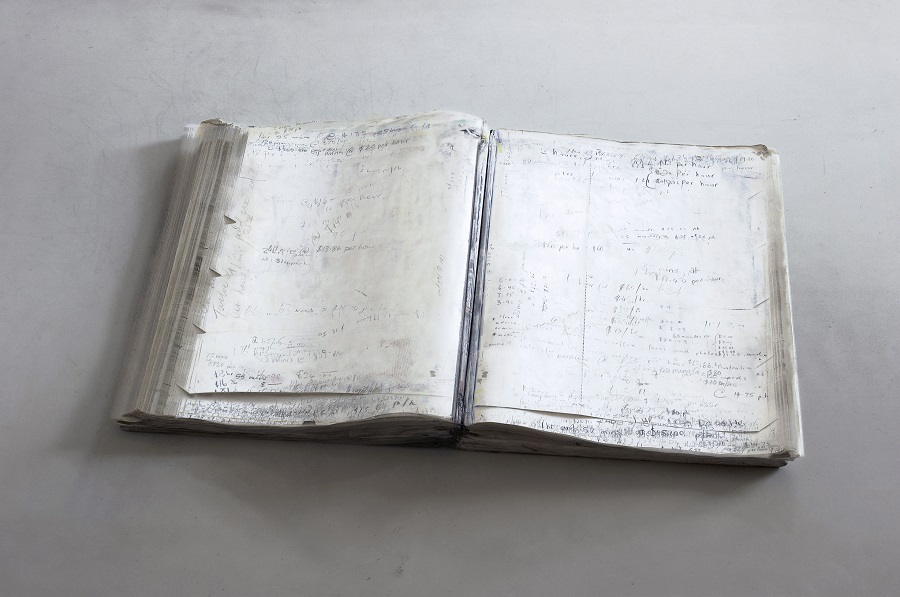There is a beautiful understatement about much of Capurro's work which can appear fragile and ephemeral, yet is rigorous in concept and often site specific in placement.
Christian Capurro, a vacant bazaar (provisional legend), 1999–2010, Nine (nearly-completely) erased magazines with rubber erasings, plus tables, Installation of variable dimensions.
Christian Capurro
Born 1968, Dampier, Western Australia, Lives and works Melbourne, Victoria
For over fifteen years Christian Capurro has been working across a range of media including drawing, photography, print, video, and installation. Two major projects have occupied much of the past decade and are known as 'the erasure projects.' Both were begun in 1999, are quite different from each other, and are called Another Misspent Portrait of Etienne de Silhouette and a vacant bazaar (provisional legend). 'My approach is characterised by process-based and conceptually oriented concerns,' he tells me. 'They might best be described as "photo–graphist" in nature. Pictures in particular fascinate me – their matter and made-ness, their technologies and histories, their affiliations and promises, the desires and frustrations they stoke.'
This remarkable body of work can appear to be 'additive' in terms of the individual projects yet 'reductive' in regards to process and procedure.
In Another Misspent Portrait of Etienne de Silhouette (1999–2009) a copy of Vogue Hommes (#92 September 1986) was systematically erased by over 250 people in the years between 1999 and 2004. 'Notations were made of the time taken to erase each page,' says Capurro, 'and the hourly rates the participants were then earning in their current employment.'
This work was presented in Melbourne (2004–5), at the 2007 Venice Biennale, and in Leuven and New York in 2009 in conjunction with a site 'response' program with invited participants and a series of related print and broadcast works. There is a beautiful understatement about much of Capurro's work which can appear fragile and ephemeral, yet is rigorous in concept and often site specific in placement.
Materials used might include correction fluid and mirrors, while certain optical sensations require the spectator to have 'tired eyes', as in Work for Tired Eyes (figures in the landscape) (2010). Capurro's works are constantly re-imagined and re-worked and he responds to them with 'crafted removals, blockages, coverings, dispossessions, and acts of reinscription.'
The universe at large, filtered though the artist's own sensibilities, throws up a fascinating list of points of cultural connection which he was kind enough to mention to me. These include: Antonello da Messina's 1475 Crucifixion, Antwerp; Staedtler erasers; Robert Landsburg's brave final shots, National Geographic, Jan. 1981; Jonathan Crary on Robert Irwin; The Amityville Horror; The kaolin surface of the 'glossies'; Arsenal FC; John Berger on Durer's Deluge watercolour; Julio Cortazar's short stories and 19th Century Nkisi nkondi figures of the lower Congo…
Text by Dr Peter Hill, artist and writer and Adjunct Professor of Fine Art at RMIT University, Melbourne.
2011 Anne & Gordon Samstag International Visual Arts Scholarship
2011 Research Student, Maumaus Escola de Artes Visuais, Lisbon, Portugal
2006 Master of Arts (Media Arts), R.M.I.T. University, Melbourne
1995 Bachelor of Fine Arts, Victorian College of the Arts, Melbourne
1989 Diploma of Photography, Australian College of Photography Art & Communication, Melbourne
Artist's website: www.christiancapurro.com

